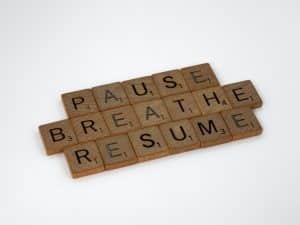
We’re starting off this weekend with a little extra credit. Just kidding – there are no grades in mindfulness! You’re such an MBA. But seriously, did you notice anything interesting about this week’s earlier post? Maybe a little something tucked away inside it, just as snug as a baby in a king cake?
Well look at you, you front-row sitting, full attention paying, mindfulness superstar, you! You got it. This week’s post had a mini mindfulness challenge in it, masquerading like just another paragraph.
That post was about identity, and the opportunity celebrations like Mardi Gras give us to bring awareness to how hard we work to project and protect our idea of our “self” in our everyday lives, mainly because they allow us to let go of it. We talked about the various perspectives from which we see ourselves, both internally and (we think) through the eyes of others. Mindfulness can help us see those constructs more clearly, recognize when we are projecting emotions we are feeling onto how we think others see us, and make intentional choices about how we respond from there.
This weekend’s mindfulness challenge isn’t too far off from the one I gave you on Tuesday, where I asked you to notice how much time your mind spends reacting to what you think others think of you. This time, I want you to notice what you think of you. “But I know what I think of me,” you say. Well, if you say so…but have you ever had a moment while in the pursuit of something awesome where you paused for a second – or longer, or even permanently – and thought, I can’t do this? Or maybe you didn’t even pursue that awesomeness because the voice got there first. Whose voice was that? Was it right, or perhaps more importantly, did you let it be right?
Mindfulness can help us notice patterns in the ways that we respond to various people, things and situations, by simply calling attention to our reflexive reactions. We notice what happens internally before we take action based on it. These stimuli aren’t just external, but also include our habitual internal response to ourselves. That response doesn’t always have to be negative, either. We can also respond positively to things that may or may not lead us to make choices we would want to repeat. It’s all about noticing the patterns, and over time, gently making an effort to shift them – if you want to.
Since this is a “No-Fail Friday,” you can’t go wrong here. All you need to do is listen. It’s all in your head, and in this case, that’s a good thing.
Photo credit: Wilfred Iven



